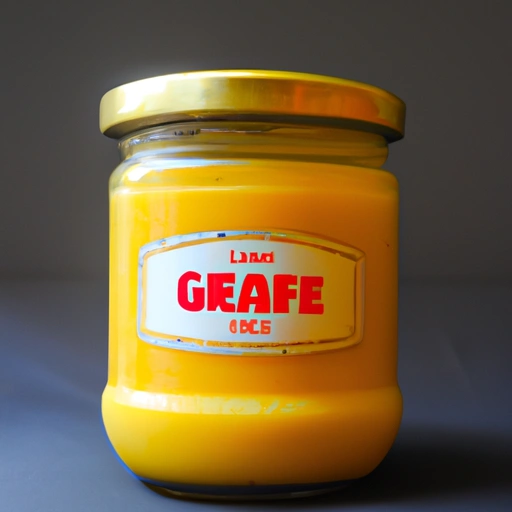Ghee
Description

Ghee, also known as clarified butter, is a traditional cooking fat that originated in ancient India and has been used in South Asian and Middle Eastern cuisines for thousands of years. It's created by simmering butter to separate the liquid components from the milk solids, which are then removed, leaving behind the golden, flavorful fat. Ghee has a high smoke point, making it an excellent option for frying and sautéing, and it's celebrated for its nutty flavor and rich aroma.
Common uses
Ghee is used as a cooking fat, a spread, and as a base for various spice infusions. It's a key ingredient in many traditional dishes, such as biryanis, curries, and sweets. Additionally, ghee is utilized in Ayurveda for its perceived health benefits, and in religious ceremonies as an offering and a fuel for lamps.
Nutritional value
Calories
One tablespoon (approximately 14 grams or 0.5 oz) of ghee contains about 120 calories.
Protein
Ghee contains negligible amounts of protein, as the milk solids have been removed during the clarification process.
Fat
One tablespoon of ghee typically contains around 15 grams (about 0.53 oz) of fat, of which 9 grams are saturated.
Carbohydrates
Ghee contains no carbohydrates, as it is a pure fat product.
Vitamins
Ghee is a source of fat-soluble vitamins, including vitamin A, E, and K2.
Minerals
It contains small amounts of minerals, such as calcium.
Health benefits
Ghee is often touted for its potential health benefits, which include providing essential fatty acids, being suitable for people with lactose intolerance, and possessing anti-inflammatory properties. Additionally, the vitamins in ghee are important for skin and eye health, and the presence of butyrate may support digestive health.
Potential risks
Despite its health benefits, ghee is high in saturated fats, which may be a concern for individuals with heart disease or those monitoring their cholesterol levels. Overconsumption of any type of fat can lead to weight gain and related health issues.
Common recipes
Ghee is commonly used in a variety of recipes, including Indian curries, Middle Eastern dishes, and an array of sweets like halwa and laddu. It is also used to sauté vegetables and as a base for making flavorful rice dishes.
Cooking methods
Due to its high smoke point of about 485°F (252°C), ghee is ideal for high-heat cooking methods such as frying, sautéing, and roasting. It can also be used to baste meats and vegetables for a rich, buttery flavor.
Pairing with other ingredients
Ghee pairs well with spices such as cumin, coriander, turmeric, and mustard seeds, enhancing their flavors when cooked together. It also complements a variety of foods, from lentils and rice to bread and seafood.
Summary
Ghee is a versatile and flavorful ingredient revered in culinary traditions around the world. With its rich history, numerous applications in cooking, and potential health benefits, it's a valuable addition to any kitchen. Though it should be enjoyed in moderation due to its high saturated fat content, ghee's unique taste and cooking properties make it a beloved staple in diverse food recipes.